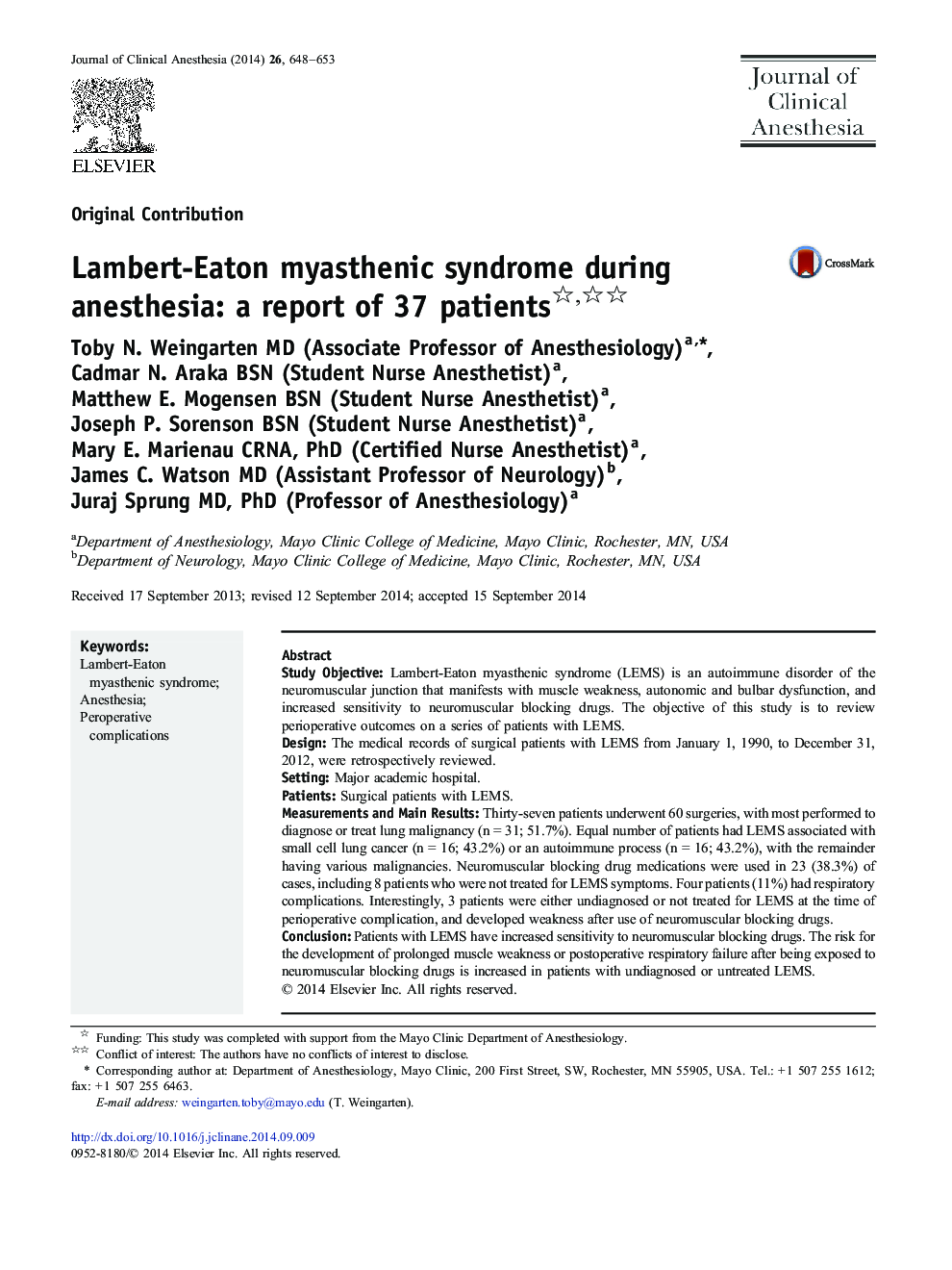| Article ID | Journal | Published Year | Pages | File Type |
|---|---|---|---|---|
| 2762519 | Journal of Clinical Anesthesia | 2014 | 6 Pages |
•Neuromuscular junction disorder LEMS may increase sensitivity to muscle relaxants.•Patients with treated LEMS usually have uneventful anesthetic management.•Unexplained weakness following neuromuscular blockers and be related to LEMS.
Study ObjectiveLambert-Eaton myasthenic syndrome (LEMS) is an autoimmune disorder of the neuromuscular junction that manifests with muscle weakness, autonomic and bulbar dysfunction, and increased sensitivity to neuromuscular blocking drugs. The objective of this study is to review perioperative outcomes on a series of patients with LEMS.DesignThe medical records of surgical patients with LEMS from January 1, 1990, to December 31, 2012, were retrospectively reviewed.SettingMajor academic hospital.PatientsSurgical patients with LEMS.Measurements and Main ResultsThirty-seven patients underwent 60 surgeries, with most performed to diagnose or treat lung malignancy (n = 31; 51.7%). Equal number of patients had LEMS associated with small cell lung cancer (n = 16; 43.2%) or an autoimmune process (n = 16; 43.2%), with the remainder having various malignancies. Neuromuscular blocking drug medications were used in 23 (38.3%) of cases, including 8 patients who were not treated for LEMS symptoms. Four patients (11%) had respiratory complications. Interestingly, 3 patients were either undiagnosed or not treated for LEMS at the time of perioperative complication, and developed weakness after use of neuromuscular blocking drugs.ConclusionPatients with LEMS have increased sensitivity to neuromuscular blocking drugs. The risk for the development of prolonged muscle weakness or postoperative respiratory failure after being exposed to neuromuscular blocking drugs is increased in patients with undiagnosed or untreated LEMS.
